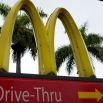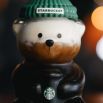In an article published on Popular Science, Sophie Bushwick decided to come up with edible water bottles and get these to a taste test.
Sophie fused sodium alginate with water to to obtain a gooey compound that would fill the water bottles. Next, she dipped spoonfuls of this mixture into a bath of water and calcium lactate, which encased them in skin-like membranes. Finally, she added the bottles in a bath of clean water.
Sophie found the DIY edible water bottle awful. The sodium-alginate-laced water is so thick and does not resemble the texture of a liquid, and the outer membrane is unpleasantly slimy. The taste is somewhat chalky. Sophie used the same method shown in the Youtube clip of Yuka Yoneda.
Published in Mental Floss, similar invention was made popular by three design students of Skipping Rocks Lab in London. Rodrigo Garcia Gonzalez, Guillaume Couche, and Pierre Paslier invented Ooho, an inexpensive, biodegradable "water bottle". Out of gelatinous membrane, the biodegradable water bottle can be eaten or safely tossed away. The blob-like water container gained a 2014 Lexus Design Award.
The orb is similar to a silicon implant and is created by using a frozen ball of water. Then it is wrapped in layers of membrane composed of calcium chloride, and then brown algae.
The method is called spherification in which the liquid appears to be solid or like a gel. The gelatinous layer is edible.
Paslier told the Guardian: "At the end of the day you don't have to eat it. But the edible part shows how natural it is. People are really enthusiastic about the fact that you can create a material for packaging matter that is so harmless that you can eat it."
Like this article? Share it with friends in Facebook.
© copyright 2024 Food World News, a property of HNGN Inc. All rights reserved. Use of this website constitutes acceptance of our terms and conditions of use and privacy policy.









